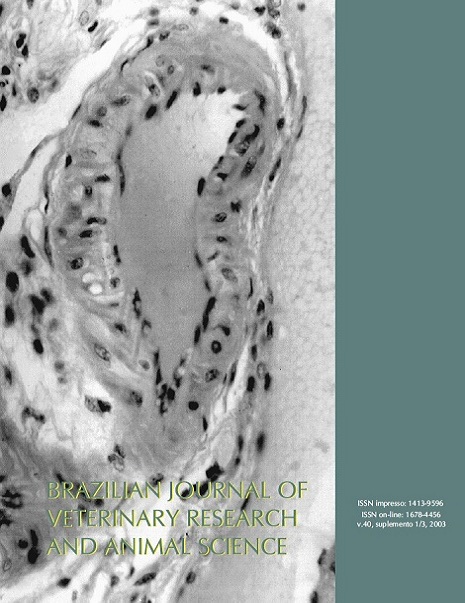Serum immunoglobulins G and M concentration in the serum of holstein calves until 90 days old
DOI:
https://doi.org/10.1590/S1413-95962003000700004Keywords:
Colostrum, Immunoglobulins, Calf and passive immunityAbstract
This study evaluated the G and M concentrations in serum of 32 calves until 90 days old, considering the way (direct suckling from mother or by bottle) and the volume of ingested colostrum. The calves were divided into 4 groups. Group 1: four liters of colostrum fed by bottle; Group 2: two liters of colostrum fed by bottle; Group 3: direct suckling from mother and and Group 4: two liters of milk by bottle. Serum IgG concentrations obtained in this study had no significant difference in the way of colostrum feeding (direct suckling from mother or by bottle), but their levels were higher in the former way of administration of colostrum, followed by those which received 4 liters of colostrum. Those animals which were not fed with colostrum presented IgG and IgM levels earlier, from 30 and 15 days old, respectively.Downloads
Download data is not yet available.
Downloads
Published
2003-01-01
Issue
Section
UNDEFINIED
License
The journal content is authorized under the Creative Commons BY-NC-SA license (summary of the license: https://
How to Cite
1.
Feitosa FLF, Borges AS, Benesi FJ, Birgel EH, Mendes LCN, Peiro JR. Serum immunoglobulins G and M concentration in the serum of holstein calves until 90 days old. Braz. J. Vet. Res. Anim. Sci. [Internet]. 2003 Jan. 1 [cited 2024 Apr. 18];40(supl.):26-31. Available from: https://www.revistas.usp.br/bjvras/article/view/11269





